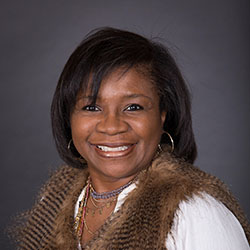Looking backwards in time can really help us appreciate all that we’ve accomplished and how far we’ve come in terms of gender equality. After all, it sure wasn’t all that long ago when women didn’t have the right to vote — just a mere 100 years ago this year was when Congress finally allowed female voting across the United States. Moreover, it wasn’t until the 1970s that women were allowed to apply for their own credit cards.
Women have certainly come a long way since the initial fight to vote, but the work isn’t over. Though women are more represented than they ever have been in American politics — the first female vice president-elect, a record number of women in Congress, and a newly elected administration that thus far has followed through with its promise to install women in key leadership roles — they still make up the minority.
This is also true in many career paths and women still typically earn less than their male counterparts. These statistics are changing, though it still feels like change is happening at a snail’s pace. In today’s world, more and more women are striving to make a name for themselves — even in traditionally male-dominated careers.
Increasing STEM Representation
One sector of the workforce that gets a lot of attention for its lack of women is the sciences. Time and again, numerous stereotypes and other challenges have made it difficult for women to overcome the hurdles required to attain some of these careers. These disparities have led to various underlying problems in our society such as openly sexist designs and attitudes in technology or limited use of women in lab studies on healthcare drugs and medications leading to more negative side effects for women.
Perhaps the most significant reason STEM careers tend to lean more heavily towards male employees has to do with things that are happening long before students get to college and settle on a major. Many STEM-related biases are inculcated and played out in elementary schools across the nation. For example, one study found that young boys are more frequently nominated for advanced math programs than young girls despite the fact the girls earn comparable math scores.
Fortunately, more and more women are rising above the stereotypes, and numerous programs are working to increase the number of young girls who are exposed to advanced STEM concepts at an early age. Women working in these fields are changing them for the better and finding creative ways to help solve problems across industries.
Women in Trades
Another realm where women are chronically underrepresented is the trades, including careers such as carpenters, plumbers, electricians, and construction contracting. Only 2% of the Iron Workers Union is made up of women and though demand for plumbers is high the likelihood of having a female plumber show up at your house is still quite low. Trades have traditionally been seen as work that is too physically demanding for women, but that is starting to change.
Today, many trade companies are striving to increase their diversity and prioritize valuable adjustments that make the workplace more welcoming. They are making changes to harassment policies and increasing awareness in workplace diversity. Furthermore, many are marketing job and training opportunities specifically towards women in hopes of hiring those that want to get apprenticeships.
In fact, numerous programs are cropping up all over the country specifically designed to help women gain the skills necessary to take advantage of high-paying trade jobs. Take Step Up for Women, a 12-week training program in West Virginia that aims to help women learn skilled trades.
The program is run by the non-profit, West Virginia Women Work, which for the past 20 years has strived to help women gain financial independence through career development. Nearly 85% of the women who graduate from the 12-week program are able to land a job.
It Isn’t Always Easy
Women have a growing power in business, which is a huge positive step forward in gender equality. But, as many women working in these industries already know, it isn’t always rainbows and butterflies. There are still numerous stereotypes, biases and good ‘ol boys clubs to overcome, especially in careers that are still heavily skewed towards males.
Taking steps to find work-life balance is critical to the ultimate success of women in whatever career they choose. Self-care is valuable in every job and that includes taking time to have breaks when needed, eat healthy, exercise, and go on vacation periodically. Putting this as a priority will help women shake off the difficult days and continue to focus on the aspects of the job that really matter.
Additional important advice that comes from those working in male-dominated fields involves striking a balance. It is valuable to not become offended easily and strive to allow men to feel like they can really be themselves around you. However, this must be balanced with a very firm line — you are not someone’s errand-runner nor do you need to bend over backward to please everyone. And you should never allow any form of sexual harassment.
***
Times have changed profoundly for the better for women, albeit slowly. There is still a long way to go to achieve female equality in some fields such as STEM and trades, but things are looking up. Making change isn’t always easy, but with the right drive any woman can thrive in a *currently* male-dominated career.
Charlie Fletcher is a freelance writer from the lovely “city of trees”- Boise, Idaho. Her love of writing pairs with her passion for social activism and search for the truth. You can see more of her work on Contently.
















